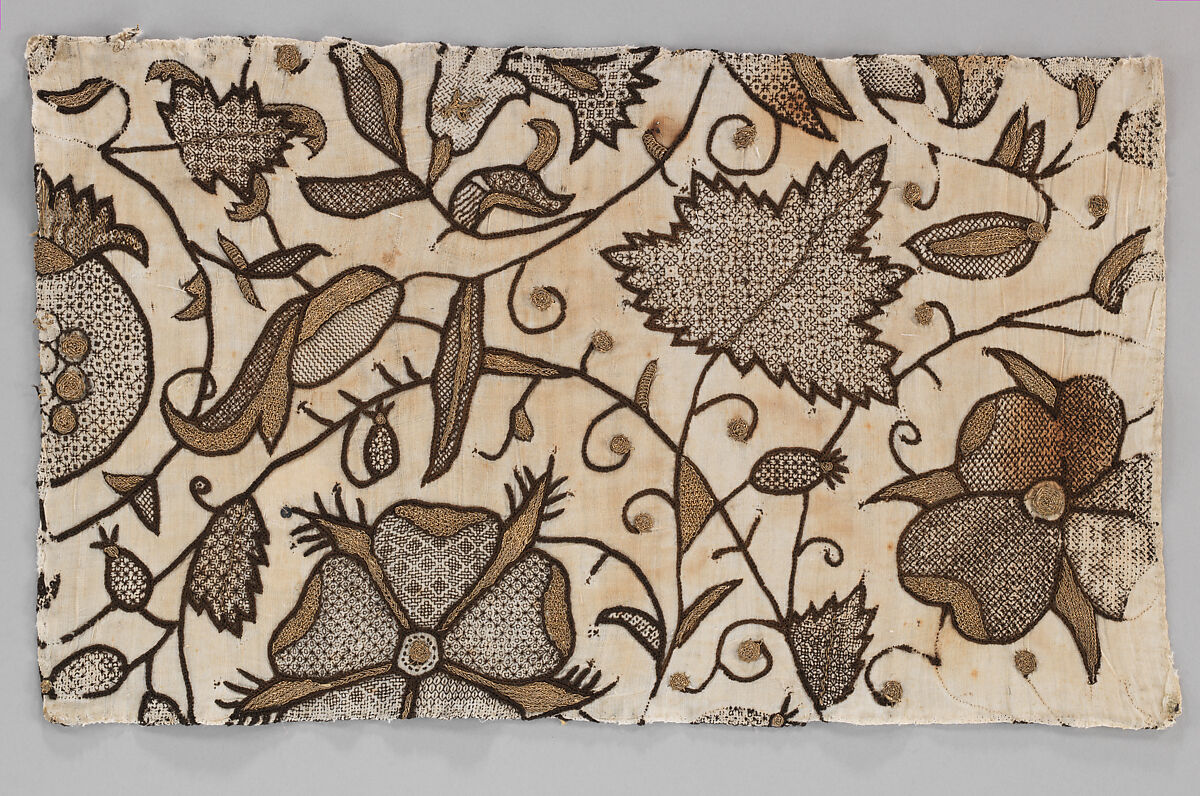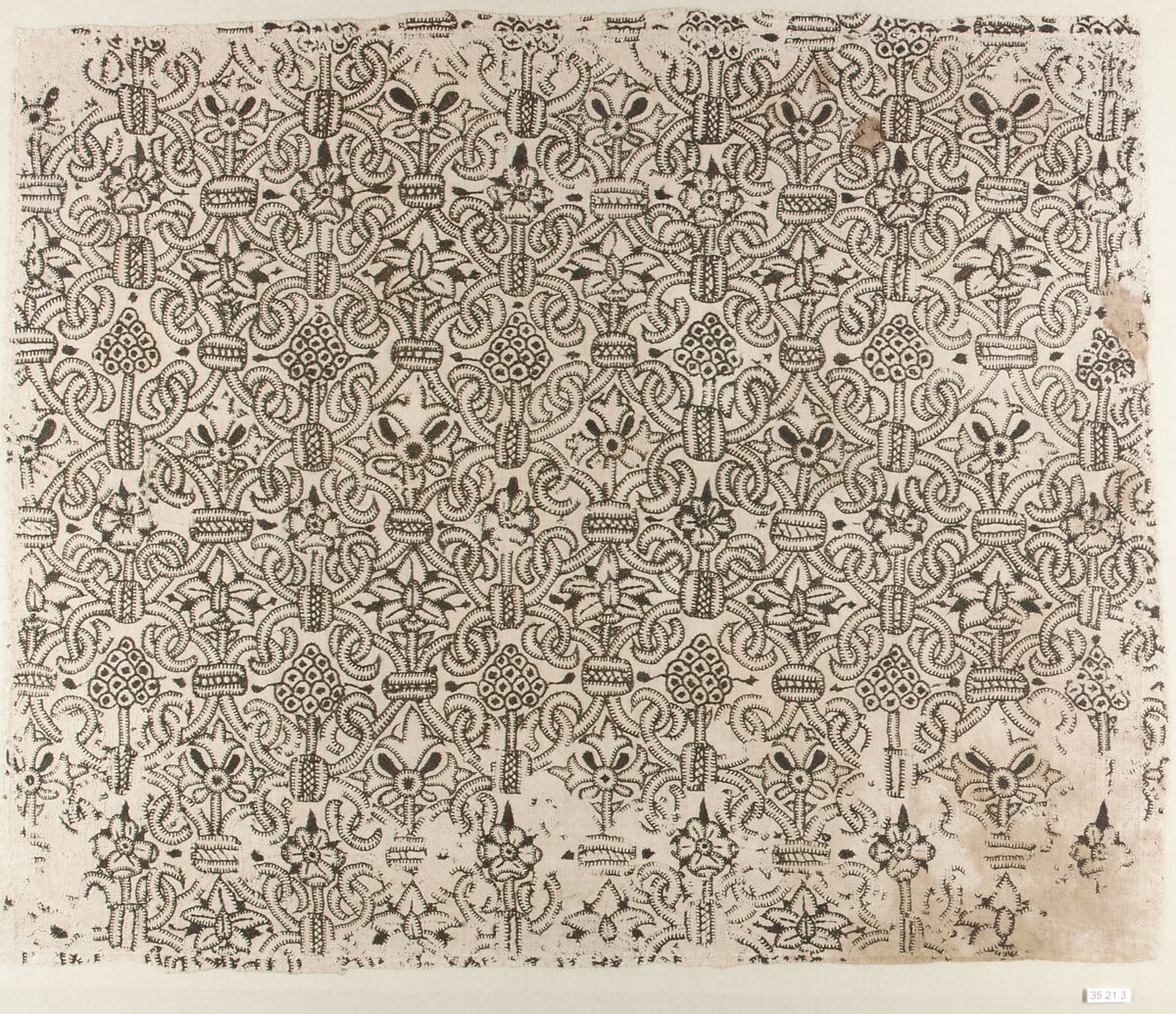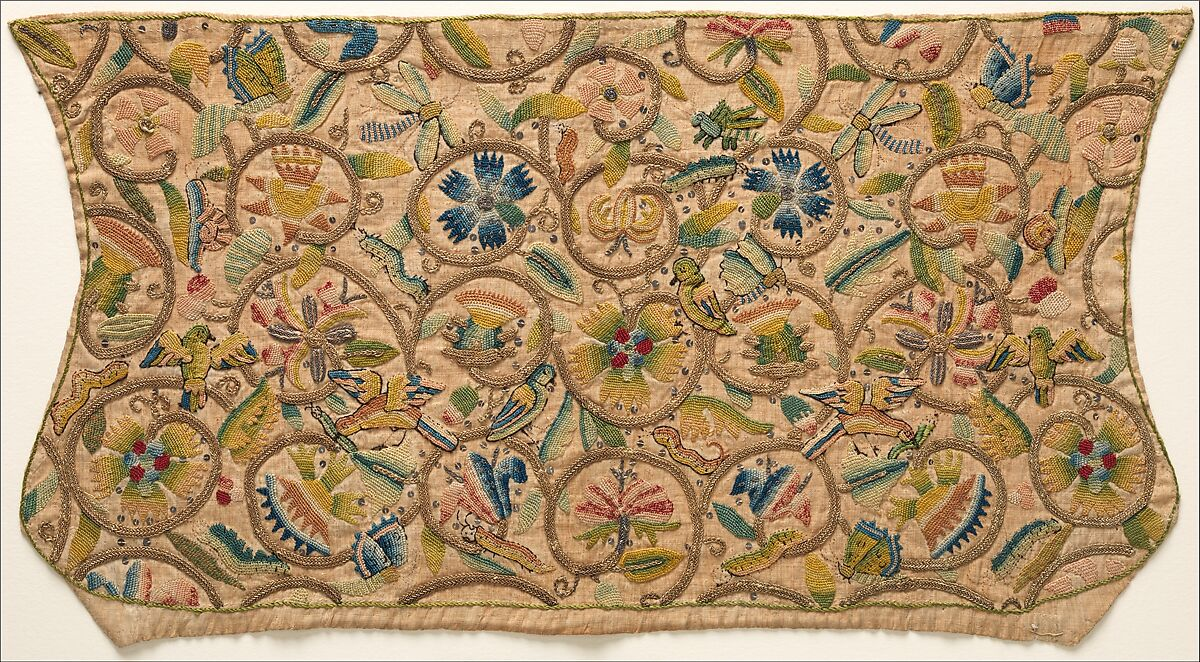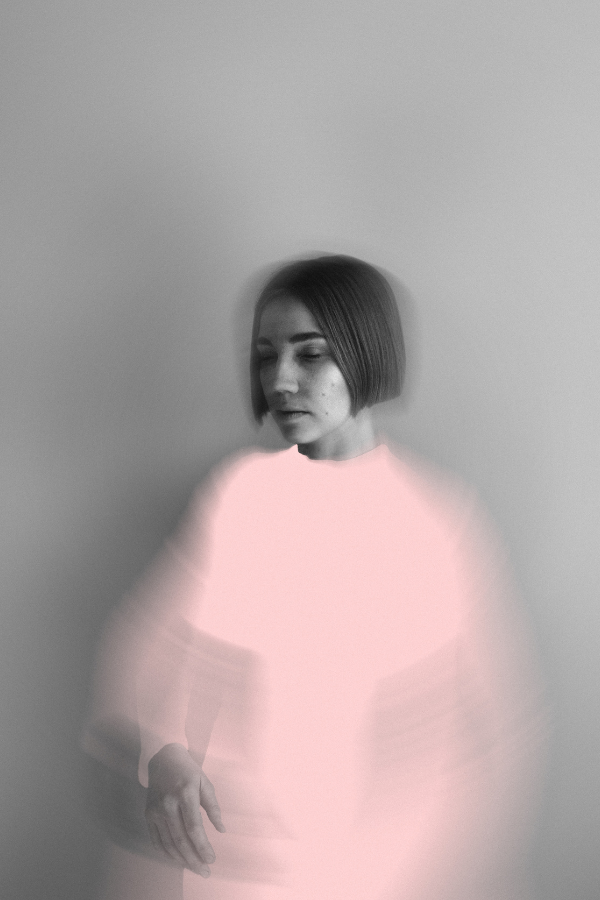

From Blackwork to Crewel: Types of Embroidery to Explore
Summary
Reflection Questions
Journal Prompt
Embroidery is a time-honored and intricate art form that has evolved through the ages, with each culture contributing its own techniques, styles, and unique aesthetics. From the luxurious shimmer of goldwork to the meditative simplicity of sashiko, there are so many types of embroidery to explore. In this article, we explore 15 types of embroidery that have left their mark on history, each offering a unique approach to decorating fabric with needle and thread. Whether you are a novice eager to learn or an experienced embroiderer looking to expand your repertoire, these diverse techniques provide endless inspiration and creative possibilities.
15 Types of Embroidery Throughout History
Embroidery is a diverse and intricate art form that involves decorating fabric with needle and thread. There are many types of embroidery, each with its own techniques, styles, and cultural significance. Below are a few common yet absolutely stunning types of embroidery to try as you gain more experience and expertise.
Cross-Stitch Embroidery
Cross-stitch is a type of counted-thread hand embroidery where X-shaped stitches are used to form pictures or patterns on fabric, typically aida cloth. This technique is one of the most popular forms of embroidery due to its simplicity and versatility. Its exact origins are unclear, but cross-stitch is believed to date back to the Middle Ages and has been used in various forms across Europe, Asia, and the Middle East. Historical examples include cross-stitch found on items from Egyptian tombs, reflecting its deep roots in textile traditions.
During the Renaissance, cross-stitch became particularly popular in Europe for decorating household linens and garments. Items such as tablecloths, bed linens, and samplers were commonly adorned with cross-stitch. Samplers, which displayed alphabets, numbers, and floral motifs, were often used by young women to practice their needlework skills. These practical and decorative items highlighted the versatility of cross-stitch in adding intricate designs to everyday objects.
In modern times, cross-stitch remains widely popular, with patterns ranging from traditional designs to contemporary and abstract motifs. Some use cross-stitch to create geometric patterns. It is used in various applications, including decorative art pieces, fashion embellishments, home décor items like pillows and quilts, and personalized gifts such as baby samplers and wedding mementos. The cross-stitch motif is also popular (even when not realized through actual embroidery).
Blackwork Embroidery


Blackwork embroidery, with its origins in Spain, gained widespread popularity in England during the Tudor period. This form of embroidery is characterized by its use of black thread, although other colors can also be employed, to create intricate and geometric designs. The contrast between the black thread and white fabric creates striking and detailed patterns that are both elegant and visually captivating. Initially, blackwork was used to adorn clothing, particularly cuffs, collars, and sleeves, providing an exquisite decorative element to the garments of the time.


The popularity of blackwork during the Tudor era can be attributed to its association with nobility and the court of Henry VIII, where it was prominently featured on garments. The technique involves stitching patterns that often include flowers, vines, and abstract geometric shapes. These patterns are typically executed in a series of straight stitches, which can create a variety of textures and effects.
Today, blackwork embroidery continues to be appreciated for its historical significance and timeless beauty. It is used in both traditional and contemporary contexts, from historical costume reproductions to modern art pieces, showcasing the enduring appeal of this elegant embroidery style.
Whitework Embroidery
Whitework embroidery encompasses a variety of techniques where white thread is stitched on white fabric, resulting in a subtle and elegant effect. This monochromatic approach emphasizes the texture and intricacy of the stitches, rather than color, to create visually stunning designs. Among the various forms of whitework, techniques such as Hardanger, Mountmellick, and pulled thread embroidery are particularly well-known. Each of these methods offers a unique approach to creating delicate patterns and textures, making whitework a versatile and cherished art form.
Hardanger embroidery, originating from Norway, features geometric designs created through a combination of counted thread and drawn thread work. Mountmellick embroidery, on the other hand, hails from Ireland and is characterized by its use of heavy white cotton thread to create raised, floral patterns on a white cotton fabric, often with a distinctive padded effect.
Pulled thread embroidery involves pulling the fabric threads together to create intricate openwork patterns, adding a lace-like quality to the design. Today, whitework continues to be valued for its timeless beauty and is used in various applications, from traditional linens and heirloom pieces to contemporary art and fashion, demonstrating its enduring appeal and versatility in the world of embroidery.
Crewel Embroidery
Crewel embroidery, a traditional form of needlework, uses wool threads on linen or cotton fabric to create richly textured and elaborate designs. This technique, dating back over a thousand years, is known for its ability to produce intricate floral patterns and motifs with a distinctive raised texture. The term “crewel” refers to the fine, twisted wool used for stitching, which allows for a wide range of colors and shades, contributing to the detailed and vibrant designs characteristic of crewelwork.
Historically, crewel embroidery was used to create intricate patterns on household items such as bed hangings, curtains, and upholstery, as well as clothing and accessories. The elaborate floral motifs and nature-inspired patterns often depicted in crewelwork reflect its origins in the Jacobean era, where it was particularly popular in England.
Modern Uses of Crewel
Today, crewel embroidery continues to be appreciated for its artistic and decorative qualities. Modern applications include home décor items like pillows and wall hangings, as well as fashion accessories and art pieces. The timeless appeal of crewelwork lies in its ability to bring a touch of handcrafted elegance and historical charm to contemporary settings.
Goldwork Embroidery


Goldwork is a luxurious and intricate form of embroidery that utilizes metal threads, often made of gold or gold-plated materials, to create rich and elaborate designs. This technique has a long history, dating back to ancient civilizations where gold thread was used to signify wealth, power, and divine favor. The shimmering effect of the metallic threads adds a level of opulence and grandeur to the embroidery, making it particularly suited for special occasions and high-status items.
Fuel your creative fire & be a part of a supportive community that values how you love to live.
subscribe to our newsletter
Traditional Applications of Goldwork
Traditionally, goldwork has been prominently used in ceremonial and ecclesiastical garments, reflecting its association with nobility and the church. In ecclesiastical settings, goldwork adorns vestments, altar cloths, and religious banners, symbolizing reverence and devotion.
In the context of royalty and nobility, it embellishes robes, regalia, and other ceremonial attire, underscoring the wearer’s prestige and importance. The complex techniques involved in goldwork, such as couching, padding, and appliqué, require a high level of skill and precision, making it a revered and specialized form of embroidery throughout history.
Needlepoint
Needlepoint, also known as canvas work, is a form of embroidery that involves stitching yarn through a stiff, open weave canvas to create a textured pattern. This technique has been used for centuries, with its origins tracing back to ancient Egypt and later flourishing in Europe during the Renaissance. The sturdy canvas, often made of linen or cotton, provides a durable base for the stitches, allowing for detailed and intricate designs. Needlepoint can range from simple, repetitive patterns to elaborate scenes and motifs, showcasing the versatility of this embroidery style.
Throughout history, needlepoint has been used to create a variety of decorative and functional items. In the past, it was particularly popular for making upholstered furniture, wall hangings, and tapestries. The designs often depicted floral patterns, geometric shapes, and historical scenes, reflecting the tastes and styles of the period. The technique requires careful counting and placement of stitches, making it both a precise and creative art form. Needlepoint has been appreciated for its durability and the richness of its textures, which add depth and dimension to the finished piece.
Sashiko
Sashiko is a traditional Japanese form of embroidery that uses simple running stitches to create repeating geometric patterns. Traditionally, sashiko is executed in white thread on indigo fabric, resulting in a striking contrast that highlights the intricate designs. This technique dates back to the Edo period in Japan and was originally developed as a practical method for reinforcing and mending worn clothes, particularly among farmers and fishermen. Over time, sashiko evolved into an art form, with patterns becoming more elaborate and decorative.
Sashiko Patterns
The geometric patterns in sashiko often draw inspiration from nature, incorporating motifs such as waves, mountains, and flowers. These designs are not only aesthetically pleasing but also carry cultural and symbolic meanings.
Sashiko stitching involves repetitive and rhythmic movements, making it a meditative and calming practice. The simplicity and elegance of sashiko have made it a cherished tradition in Japanese textile arts, reflecting a deep appreciation for craftsmanship and the beauty of everyday objects.
Ribbon Embroidery
Ribbon embroidery is a decorative technique that uses silk ribbons to create floral designs with a three-dimensional effect. This form of embroidery has a rich history, with its origins in the 17th century when it became popular in Europe, particularly in France. The luxurious and delicate nature of silk ribbons lends itself to creating lifelike flowers, leaves, and other natural elements, adding a unique texture and depth to the fabric. Ribbon embroidery requires skillful manipulation of the ribbons, which can be twisted, folded, and stitched in various ways to achieve the desired effect.
Historically, ribbon embroidery was used to embellish clothing, accessories, and home décor items, often associated with high fashion and aristocracy. The technique allowed for intricate and realistic floral designs, making garments and fabrics appear more lavish and ornate. Ribbon embroidery was often featured on gowns, hats, and other fashion items, reflecting the opulence and elegance of the period. The three-dimensional aspect of ribbon embroidery sets it apart from other forms of embroidery, creating a visually stunning and tactile experience.
Tambour Embroidery


Tambour embroidery, originating from Asia, is a technique that uses a tambour hook to create chain stitches in a continuous line, often on sheer fabrics. The name “tambour” comes from the French word for drum, as the fabric is typically stretched tightly over a frame resembling a drum to keep it taut while stitching. This method of embroidery dates back to the 18th century and became particularly popular in Europe during the 19th century, especially in France and England. The tambour hook, similar to a small crochet hook, allows for quick and efficient stitching, making it possible to create intricate and flowing designs.
The fine and delicate nature of tambour embroidery makes it ideal for embellishing lightweight fabrics such as tulle, organza, and silk. This technique was often used to decorate fashionable garments, bridal wear, and evening gowns, adding a touch of elegance and sophistication. The continuous chain stitch created by the tambour hook can form intricate patterns, including floral motifs, scrolls, and lace-like designs. The precision and speed of tambour embroidery have made it a favored technique for creating detailed and decorative needlework.
Stumpwork
Stumpwork is a type of raised embroidery that creates three-dimensional elements using padding and wire to lift parts of the design off the fabric. This technique originated in the 17th century in England and was particularly popular during the Elizabethan and Stuart periods.
Stumpwork often depicts detailed scenes, such as biblical stories, allegories, and nature motifs, with figures, animals, and plants rendered in a lifelike and textured manner. The use of padding, often made from felt or wool, and wire allows for parts of the embroidery to be sculpted and raised, creating a multi-dimensional effect.
Historically, stumpwork was used to embellish items such as caskets, mirror frames, and book covers, showcasing the skill and creativity of the embroiderer. The intricate and three-dimensional nature of stumpwork required a high level of craftsmanship, making it a prestigious and valued art form.
The designs were often rich in detail and texture, with elements such as petals, leaves, and wings standing out from the fabric, creating a dynamic and engaging visual experience. The complexity and beauty of stumpwork have made it a unique and cherished form of embroidery throughout history.
Brazilian Embroidery
Brazilian embroidery is renowned for its use of rayon thread, which imparts a glossy and vibrant finish to the designs. This style of embroidery often features floral motifs and other natural elements, creating a three-dimensional and textured look. The unique sheen of rayon thread sets Brazilian embroidery apart from other forms, giving it a distinctive and eye-catching appearance. The technique originated in Brazil and gained popularity for its bright colors and intricate details, often showcasing exotic flowers and foliage native to the region.
The dimensional quality of Brazilian embroidery is achieved through various stitches, such as the bullion knot, cast-on stitch, and drizzle stitch, which add depth and texture to the designs. These stitches allow the embroiderer to create lifelike petals, leaves, and other elements that appear to leap off the fabric. The complexity and variety of stitches used in Brazilian embroidery require a high level of skill and precision, making it a respected and admired form of needlework. The detailed and vibrant designs capture the beauty and diversity of nature, reflecting the artistic heritage of Brazil.
Counted-Thread Embroidery
Counted-thread embroidery encompasses techniques like cross-stitch and blackwork, where stitches are counted and placed in a calculated manner on the fabric. This method requires precise counting and alignment, as the design is built up stitch by stitch on a grid-like pattern. Cross-stitch involves making X-shaped stitches to form images or patterns, while blackwork uses straight stitches to create intricate, geometric designs. Both techniques rely on the even weave of the fabric, such as aida cloth, to ensure accurate placement of stitches.
Historically, counted-thread embroidery has been used for creating samplers, which served both as practice pieces for young women learning needlework and as decorative items. These samplers often featured alphabets, numbers, and motifs, showcasing the embroiderer’s skill and creativity. The detailed and structured nature of counted-thread embroidery allows for the creation of complex and symmetrical designs, which have been admired for their precision and beauty. This form of embroidery has deep roots in various cultures, reflecting the artistic and practical skills passed down through generations.
Surface Embroidery
Surface embroidery encompasses techniques like satin stitch, chain stitch, and stem stitch, which are worked freely on the fabric without following a grid. Unlike counted-thread embroidery, surface embroidery allows for greater artistic freedom, as the stitches can be placed anywhere on the fabric to create the desired design. This method is known for its fluidity and versatility, enabling the creation of detailed and expressive patterns. Surface embroidery can range from simple, linear designs to elaborate and richly textured pieces.
Historically, surface embroidery has been used to embellish garments, household linens, and decorative items. Techniques like satin stitch, which involves filling in areas with smooth, close-set stitches, and chain stitch, which creates a linked pattern of loops, have been popular for their ability to add texture and dimension to fabric. Stem stitch, often used for outlining and detailing, provides a continuous line that can be curved and shaped to follow intricate designs. The freedom and flexibility of surface embroidery have made it a beloved art form across cultures, allowing for a wide range of artistic expression and creativity.
Cutwork
Cutwork embroidery involves cutting away portions of the fabric and then stitching around the edges to create lace-like patterns. This technique dates back to the Renaissance period and has been used extensively in Europe to adorn linens, garments, and church vestments. The process begins with outlining the design on the fabric, cutting away specific areas, and then using stitches like buttonhole stitch to secure the raw edges. The resulting open spaces and intricate borders give cutwork its distinctive and delicate appearance.
Historically, cutwork has been associated with luxury and craftsmanship, often seen on high-quality linens and fine garments. The technique requires precision and skill, as the fabric must be cut and stitched carefully to prevent fraying and maintain the integrity of the design. Cutwork patterns often include floral motifs, geometric shapes, and decorative borders, reflecting the artistic styles of different periods and regions. The delicate and airy look of cutwork has made it a prized technique in the world of embroidery, showcasing the beauty and intricacy of handcrafted textile art.
Appliqué
Appliqué is an embroidery technique that involves sewing pieces of fabric onto a larger fabric background, often combined with embroidery stitches to create decorative designs. This method has been used for centuries across various cultures, known for its versatility and ability to add color, texture, and dimension to textiles. The appliqué pieces can be cut into shapes and arranged to form intricate patterns, which are then secured with stitches like blanket stitch, satin stitch, or running stitch.
Historically, appliqué has been used in many contexts, from clothing and quilts to banners and ceremonial items. The technique allows for the reuse of fabric scraps, making it both a practical and artistic method of decoration. Appliqué designs can range from simple, bold shapes to complex and detailed images, often reflecting cultural motifs and artistic traditions.
The combination of different fabrics and stitches in appliqué creates a rich and textured surface, highlighting the creativity and craftsmanship of the embroiderer. This technique has been celebrated for its ability to transform plain fabric into vibrant and intricate works of art.
Final Thoughts on the Many Types of Embroidery
Embroidery’s rich history and diverse techniques offer a captivating journey through time and culture, revealing the artistry and craftsmanship of countless generations. As you explore these stunning examples, consider visiting museums with significant embroidery collections, like the Victoria and Albert Museum in London, the Metropolitan Museum of Art in New York, and the Textile Museum in Washington, D.C., to see these works firsthand.
Taking a class can also be a wonderful way to deepen your appreciation and skills in this intricate art form. Whether you’re drawn to the delicate patterns of whitework or the bold textures of crewel embroidery, immersing yourself in this world promises a rewarding and creative adventure.








